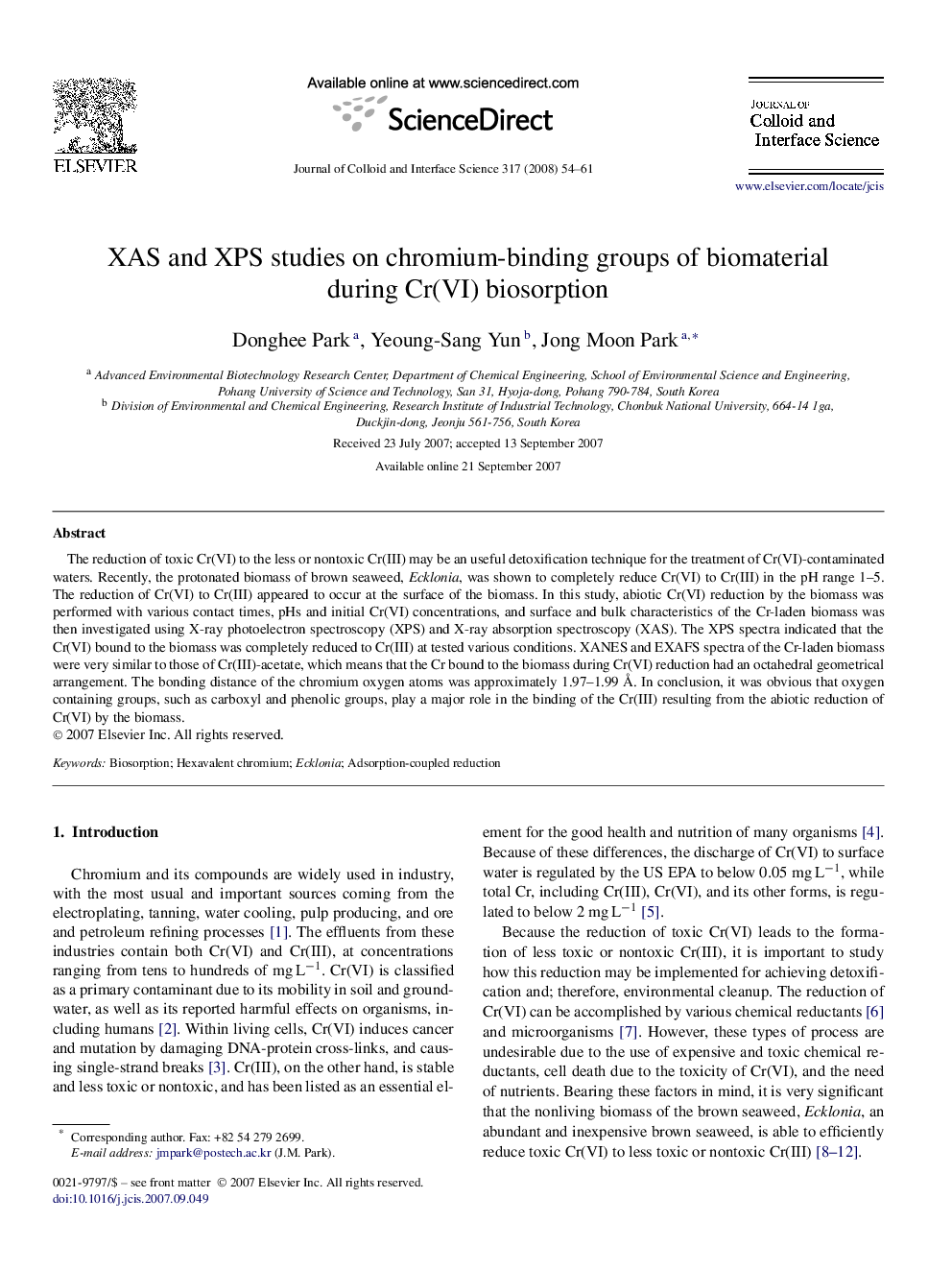| Article ID | Journal | Published Year | Pages | File Type |
|---|---|---|---|---|
| 611866 | Journal of Colloid and Interface Science | 2008 | 8 Pages |
The reduction of toxic Cr(VI) to the less or nontoxic Cr(III) may be an useful detoxification technique for the treatment of Cr(VI)-contaminated waters. Recently, the protonated biomass of brown seaweed, Ecklonia, was shown to completely reduce Cr(VI) to Cr(III) in the pH range 1–5. The reduction of Cr(VI) to Cr(III) appeared to occur at the surface of the biomass. In this study, abiotic Cr(VI) reduction by the biomass was performed with various contact times, pHs and initial Cr(VI) concentrations, and surface and bulk characteristics of the Cr-laden biomass was then investigated using X-ray photoelectron spectroscopy (XPS) and X-ray absorption spectroscopy (XAS). The XPS spectra indicated that the Cr(VI) bound to the biomass was completely reduced to Cr(III) at tested various conditions. XANES and EXAFS spectra of the Cr-laden biomass were very similar to those of Cr(III)-acetate, which means that the Cr bound to the biomass during Cr(VI) reduction had an octahedral geometrical arrangement. The bonding distance of the chromium oxygen atoms was approximately 1.97–1.99 Å. In conclusion, it was obvious that oxygen containing groups, such as carboxyl and phenolic groups, play a major role in the binding of the Cr(III) resulting from the abiotic reduction of Cr(VI) by the biomass.
Graphical abstractXAS and XPS studies revealed that oxygen containing groups, such as carboxyl and phenolic groups, play a major role in the binding of the Cr(III) resulting from the abiotic reduction of Cr(VI) by biomaterials.Figure optionsDownload full-size imageDownload as PowerPoint slide
